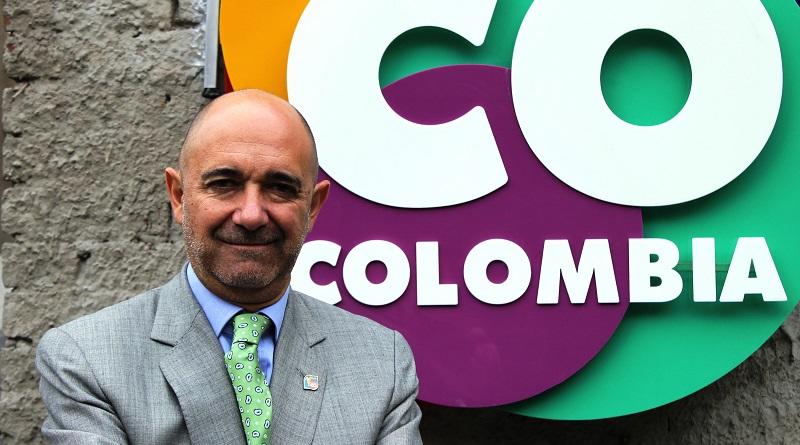Colombia, as country is currently undergoing significant changes. 2017 marks the Renaissance of a nation which, after 50 years of armed conflict, is now eager to restore its image and reputation as a peaceful destination and a nation eager to contribute to the economic development of Latin America.
Learn about Brand Colombia’s challenges and opportunities in this interview with José Pablo Arango Calle of ProColombia, the organisation charged with overseeing the development of Marca País Colombia.
Learn about:
- The meaning of ‘brands’ and ‘branding’ in a country context, and how they differ from marketing;
- How ProColombia uses country branding to counter wide-held, outdated perceptions of an insecure, conflict-ridden country;
- How the organisation ProColombia works, and its main challenges;
- How place branding links with sustainable development;
- Why New Zealand and Peru are good practice examples in country branding;
- Five tips for country brand managers eager to ‘do it right’.
José Pablo, what do you understand as the “brand” of places, and what is place branding all about?
The first thing one has to understand is that all places have a brand, because a brand is a set of perceptions. Place branding occurs when you decide to manage that brand and lead those perceptions to a result that positively impacts the location’s development.
In your view, which is the biggest misconception that the global audience holds about Colombia? And which place brand initiatives do you use to change this?
According to many studies, more than half of the world’s population does not know anything about Colombia. Many of those who know it either confuse us with other places, believe we live in the jungle, or that we are a dangerous place. Only a few know the degree of development we have, the size of our economy, our unique biodiversity and the great talent and capacity of our people.
The focus of our country branding work in Colombia is to generate positive content about the country that is relevant and memorable for the audiences we want to impact.
Do you distinguish between country branding and -marketing? Where is the difference?
The difference is in the product; in marketing, you discover needs and based on that, products are created to fulfill them. In country branding the product is already there, and the big task is to display it in a relevant and attractive way.
Which is the biggest challenge that you have faced with regard to managing ProColombia?
The big challenge of our country brand work is to find our own values and identity, and make that attractive for the audiences we are interested in.
We are experiencing a very special moment in Colombia: this will be our first year in peace after 50 years of conflict, which is a great opportunity for the country’s brand.
How can place branding support the sustainable development of countries, such as Colombia? Where’s the link?
A very important part of our work is to highlight the good things of our country in all fields, making that an example for all. If we make best practices relevant, we are contributing notably to our country’s sustainable development.
How does your organization, ProColombia work? And which recent initiative are you particularly proud about?
ProColombia is a governmental organization dedicated to the promotion of foreign investment, tourism, exports and our country’s good reputation. We work with those responsible for each of those areas, enhancing their work and using our country’s facts as an input for our work.
It has been a great achievement for us, and we feel very proud of having been able to modify the negative discourse on social networks about Colombia through the #LoBuenoDeColombia campaign.
How do you measure the success or effectiveness of your country branding programs? And which other countries serve you as inspiration?
We use public information of more than 10 country reputation studies that are currently published and we monitor our brand’s evolution: from the value of the brand published by Brand Finance, to our digital reputation in the Bloom Consulting study.
The work New Zealand has done to mix its century-old traditions with its way of doing things today seems to me a good example.
Peru’s creativity is another good example of a job well done.
Five tips for country brand managers eager to ‘do it right’?
1. Understand that many of the traditional marketing and advertising rules do not apply.
2. Don’t try to be what you are not.
3. Acknowledge your virtues and defects.
4. Take risks.
5. Don’t politicize your country brand.
Reflecting on your many years of experience in the field, are there any major trends, lessons or insights linked to country branding, which you could share with our readers?
Not many have the privilege of managing the most important brand in their country. It is a job that must be performed with the greatest sense of responsibility and dedication, always looking at the long-term, with patience and consistency, acknowledging the weaknesses and highlighting the advantages. But above all, understanding that the world today is too competitive not to try showing something really different.
Thank you, José Pablo.
Connect with José Pablo Arango Calle on LinkedIn or learn more about the work of ProColombia.
Enjoyed our interview with José Pablo Arango Calle about Colombia’s image, reputation and country branding? Share and spread the word!


